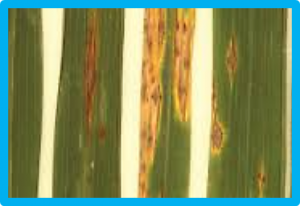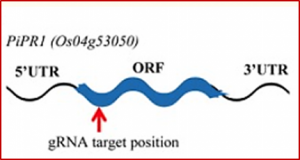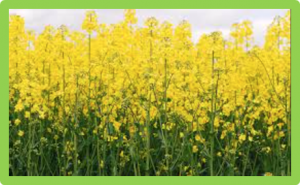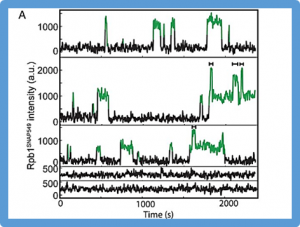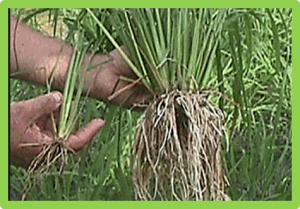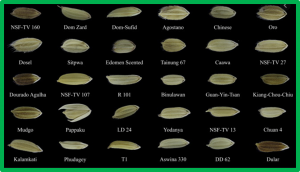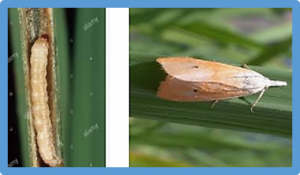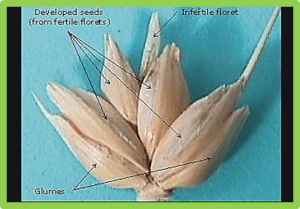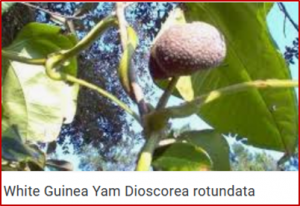In the present investigation, phenotypic evaluation of blast disease reaction was conducted at Ponnampet and Mandya districts of Karnataka, India, which indicated that the rice varieties such as IR64, Jaya, KMP153, IR30864, Mandya Sona-1, Mandya Sona-2, KCP-1, Dodda Byra, and Malgudi Sanna were susceptible to both leaf and neck blasts. Further, the rice varieties that were resistant to leaf blast such as KMP200, DHMAS70Q164-1b, Karibatta, Coimbatore Sanna and others showed susceptible reaction to neck blast only.
Because of the frequent breakdown of major resistance (R) genes, identification of new partial R genes against rice blast disease is an important goal of rice breeding. In this study, we used a core collection of the Rice Diversity Panel II (C-RDP-II), which contains 584 rice accessions and are genotyped with 700 000 single-nucleotide polymorphism (SNP) markers. The C-RDP-II accessions were inoculated with three blast strains collected from different rice-growing regions in China.
The functional importance of lobed leaves in rapeseed (Brassica napus L.) has been identified with potential advantages for high-density planting and hybrid production. Our previous studies indicated that the tandemly duplicated LMI1-like genes BnA10. RCO and BnA10.LMI1 are candidate genes of an incompletely dominant locus, which is responsible for the lobed-leaf shape in rapeseed.
In eukaryotes, RNA polymerase II (RNApII) transcribes messenger RNA from template DNA. Decades of experiments have identified the proteins needed for transcription activation, initiation complex assembly, and productive elongation. However, the dynamics of recruitment of these proteins to transcription complexes, and of the transitions between these steps, are poorly understood. We used multiwavelength single-molecule
To explore the relationship between charge characteristics of rice roots and aluminum (Al) tolerance of rice, roots of 47 different rice genotypes were obtained by hydroponic experiment. The zeta potentials of roots were determined by streaming potential method, and the Al tolerance and the functional groups of rice were measured by relative root elongation and infrared spectroscopy (ATR-FTIR), respectively.
Whole genome duplication (WGD) is a common phenomenon in plants, inducing species diversity, promoting speciation, and playing an important role in providing new genetic material in plant evolution. So far, numerous new gene functions such as pseudogenization, neofunctionalization, and subfunctionalization have evolved through WGD. WGD has occurred several times during the evolution of angiosperms over the past 200 million years. Poaceae, one of the largest plant families in the angiosperms, is considered one of the most economically important and ecologically successful plants, with approximately 600 genera and 10,000 species.
Rice (Oryza sativa L.) grains are classified as long, medium, or short on the basis of their shapes. Long-grained rice cultivars belong to the indica subspecies, whereas short-grained rice cultivars are members of the japonica subspecies. Medium-grained cultivars may be members of either subspecies. Japonica cultivars are typically grown in temperate climates. The Grain Utilization Value Added Project, a collaborative effort between the International Rice Research Institute and the Rural Development Administration, Republic of Korea, has made efforts to develop japonica cultivars that are adaptable to the tropical climate.
Rice (Oryza sativa L.) production is always threatened by biotic and abiotic stresses. Both stresses can reduce rice productivity and quality. Yellow stem borer (YSB; Scirpophaga incertulas Walker) is one of the biotic stresses and is reported as the most destructive pest of tropical rice insects. The application of pesticides is less effective since the insect larvae live and feed inside the stem, thus inhibiting pesticides to reach the larvae
As an important component of plant height (PH), spike extension length (SEL) plays a significant role in formation of an ideotype in wheat. Despite the fact that numerous loci for SEL in wheat have been reported, our knowledge on PH-independent loci remains to be limited. In this study, two recombinant inbred line (RIL) populations genotyped using the Wheat55K SNP were used to detect quantitative trait loci (QTL) controlling SEL across six environments.
White Guinea yam (Dioscorea rotundata) is an important staple tuber crop in West Africa. However, its origin remains unclear. In this study, we resequenced 336 accessions of white Guinea yam and compared them with the sequences of wild Dioscorea species using an improved reference genome sequence of D. rotundata. In contrast to a previous study suggesting that D. rotundata originated from a subgroup of Dioscorea praehensilis


 Curently online :
Curently online :
 Total visitors :
Total visitors :
